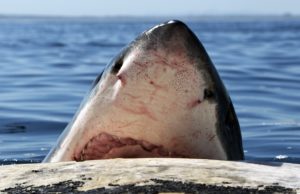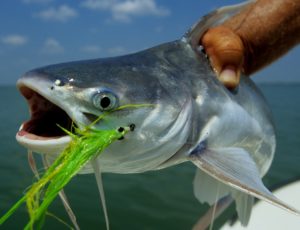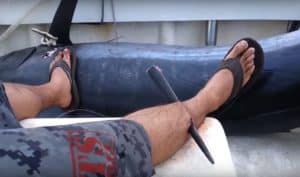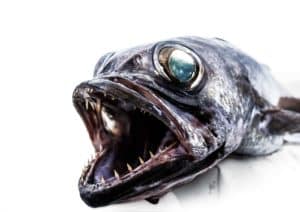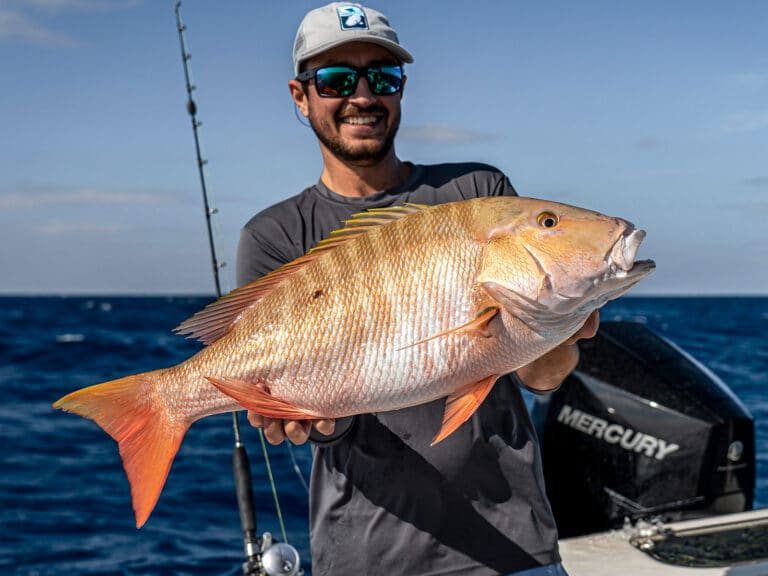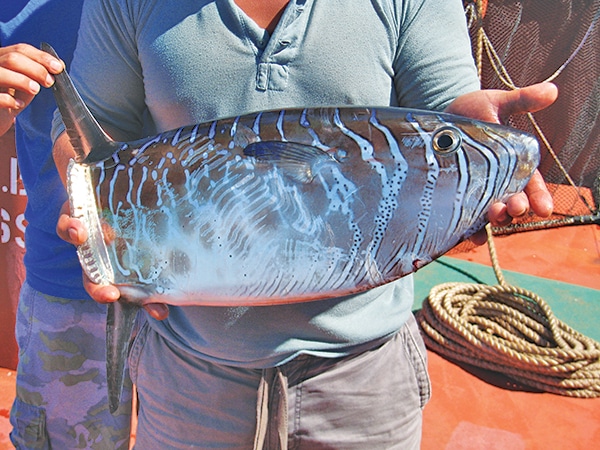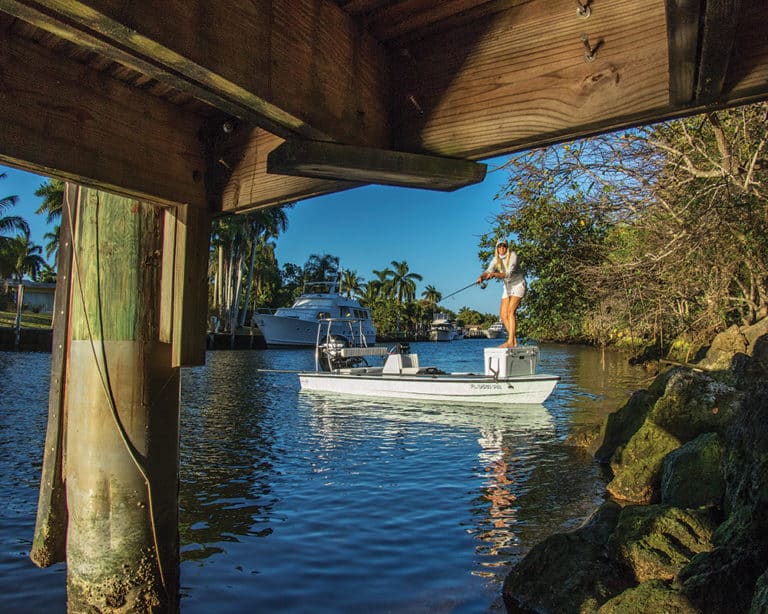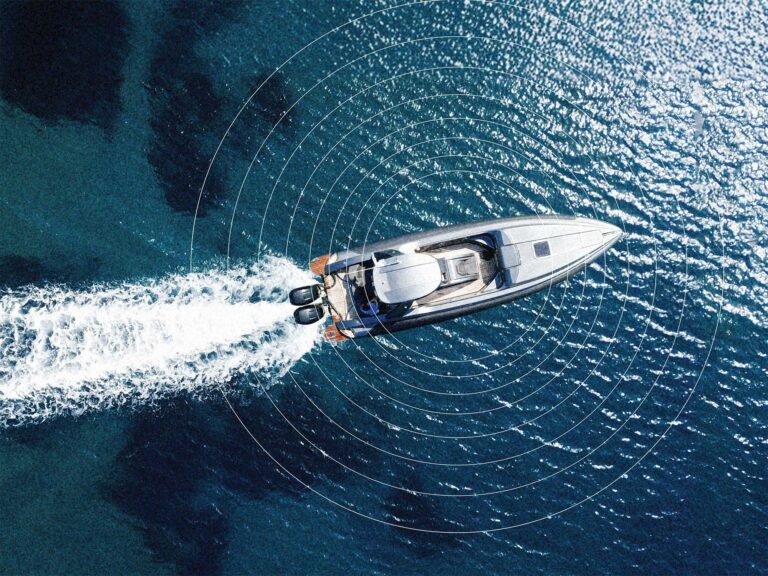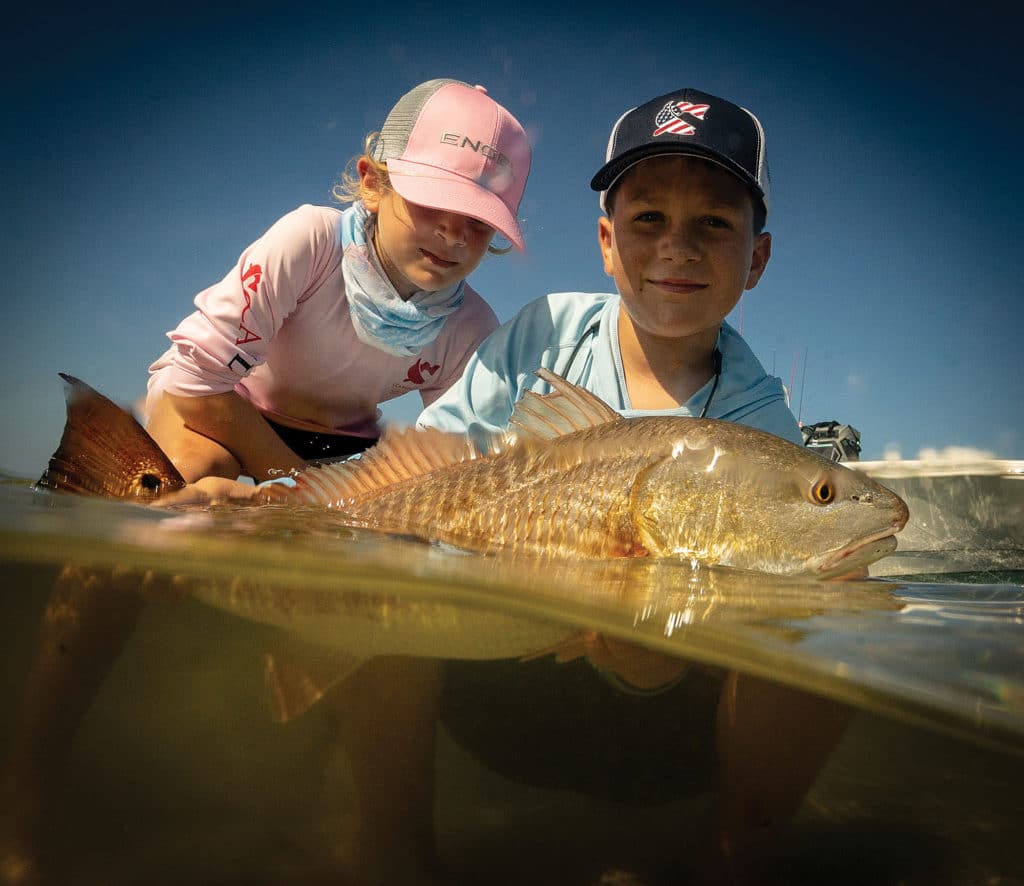
Saltwater restocking programs tug at the heartstrings of anglers and nonanglers alike. What’s not to love? You hatch and rear little cobia, flounder, redfish, salmon, snook, spotted seatrout, white seabass and other game-fish species. Then you release the juveniles to help bolster wild populations that have been reduced by factors such as habitat destruction, pollution, environmental catastrophe or overfishing. Hatchery fish integrate with native fish, reproduce, and fishery stocks rebound.
But do restocking programs really work? How does anyone know how many hatchery fish survive in the wild? Do they survive at all, and if so, do they reproduce? These are questions that hatchery managers and fishery biologists around the country strive to research, answer and document on an ongoing basis. It’s about economics as much it is science, for without evidence that saltwater-fishery-enhancement efforts are effective, funding for such programs — though they tug at the heartstrings — might well be diverted or squashed altogether.
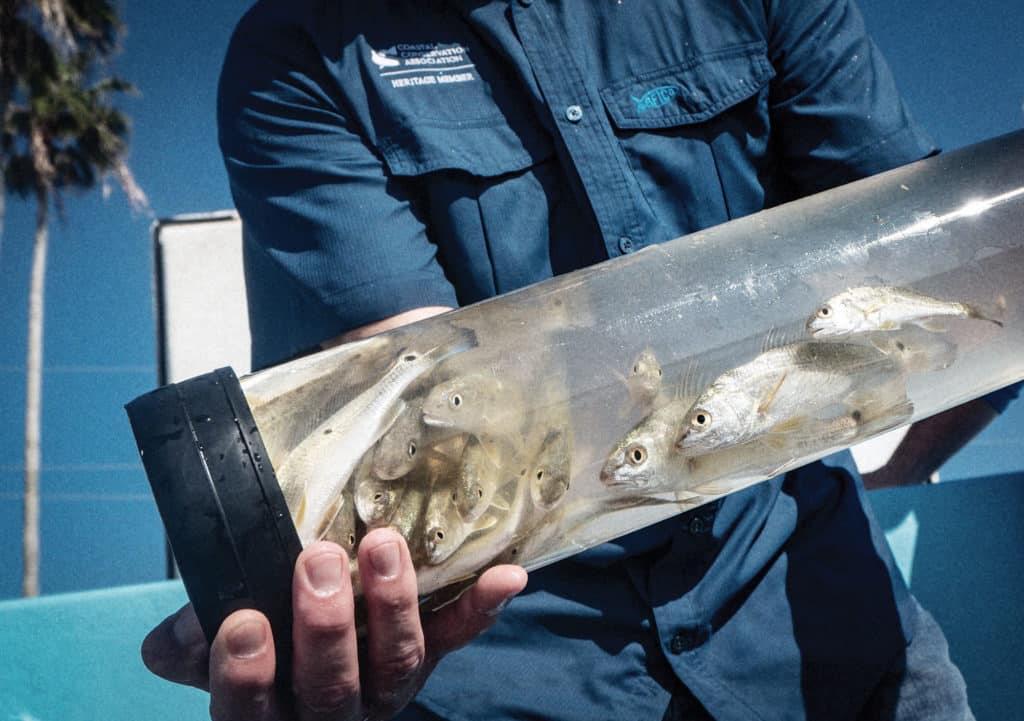
Prove It
“If you want to have hatcheries, you have to prove they work,” says Robert Vega, Ph.D., adjunct professor with the department of life sciences at Texas A&M University at Corpus Christi. He has specialized in marine-fish hatcheries and stock enhancement since 1983.
Vega points to examples of bygone federal programs in the 1940s to enhance cod, hake, summer flounder and winter flounder populations. “These were shut down by the feds because no one could prove they worked,” he notes.
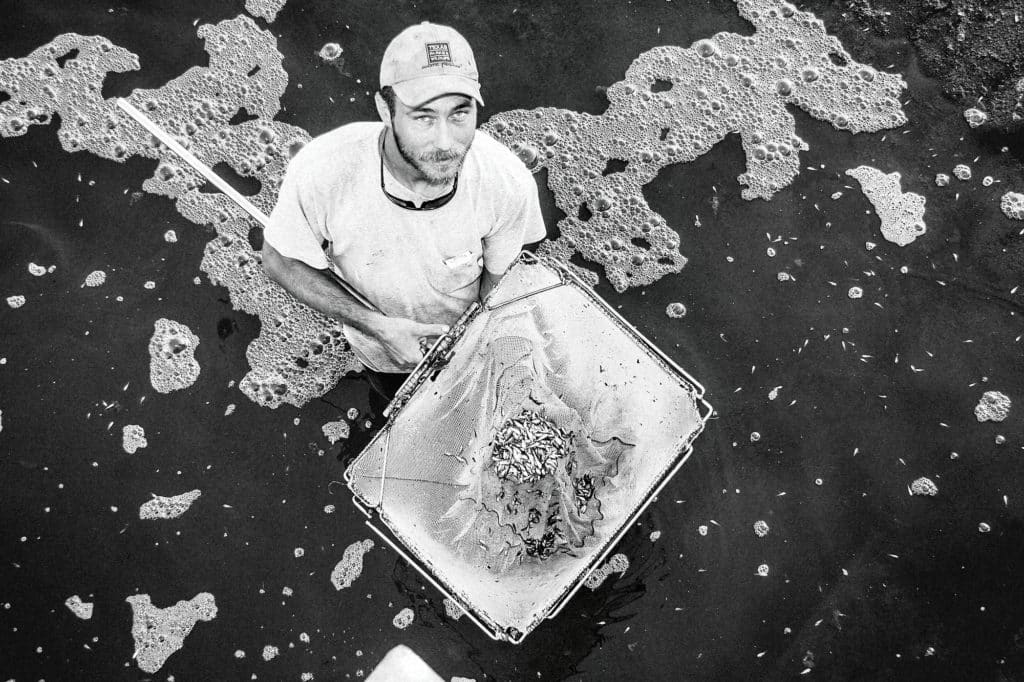
Today, a number of saltwater-fish-hatchery and -enhancement programs exist in coastal areas around the United States. Restocking efforts are also underway in Australia, China, Japan and other countries.
In the United States, most programs rely on some form of public funding. In Texas, for example, the lion’s share of money comes from the federal Sport Fish Restoration Act, which taxes fishing tackle at wholesale.
In Southern California, a special fee for a marine enhancement stamp on annual saltwater-fishing licenses serves as one of the main funding tools for the white seabass hatchery and restocking program operated by the Hubbs-SeaWorld Research Institute.
Regulation of saltwater hatcheries usually falls under the auspices of state departments of natural resources (known in some states as departments of fish and wildlife). However, hatchery operations are often run by separate entities such as a university or nongovernmental institution. Nonprofit conservation groups such as state chapters of the Coastal Conversation Association can also play significant roles in providing financial support and volunteer assistance.
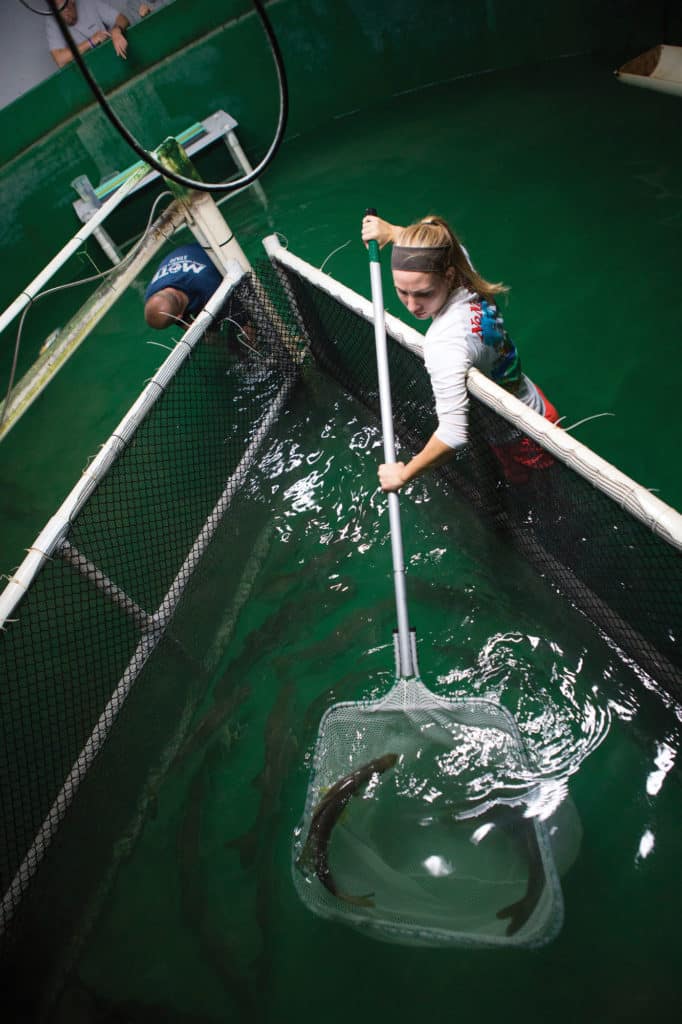
Sense of Urgency
Recent ecological disasters and mass-mortality events such as the influx of red tide in southwest Florida and algae blooms on the state’s east coast have lent even greater impetus for the need to restock affected fish populations. CCA Florida — working in conjunction with the Florida Fish and Wildlife Conservation Commission and Duke Energy — has led the charge, most recently with the release of 16,000 juvenile red drum and 200 adults into the waters of Charlotte, Collier, Hillsborough, Lee, Manatee, Pasco and Sarasota counties earlier this year.
CCA Florida and Florida FWCC are also partnering with Sarasota-based Mote Marine Laboratory for a scheduled release of 5,000 hatchery-reared juvenile common snook along Florida’s southwest coast in May of this year with the goal of augmenting the number of young fish, whose numbers are down due to the adverse effects of red tide on snook-spawning aggregations.
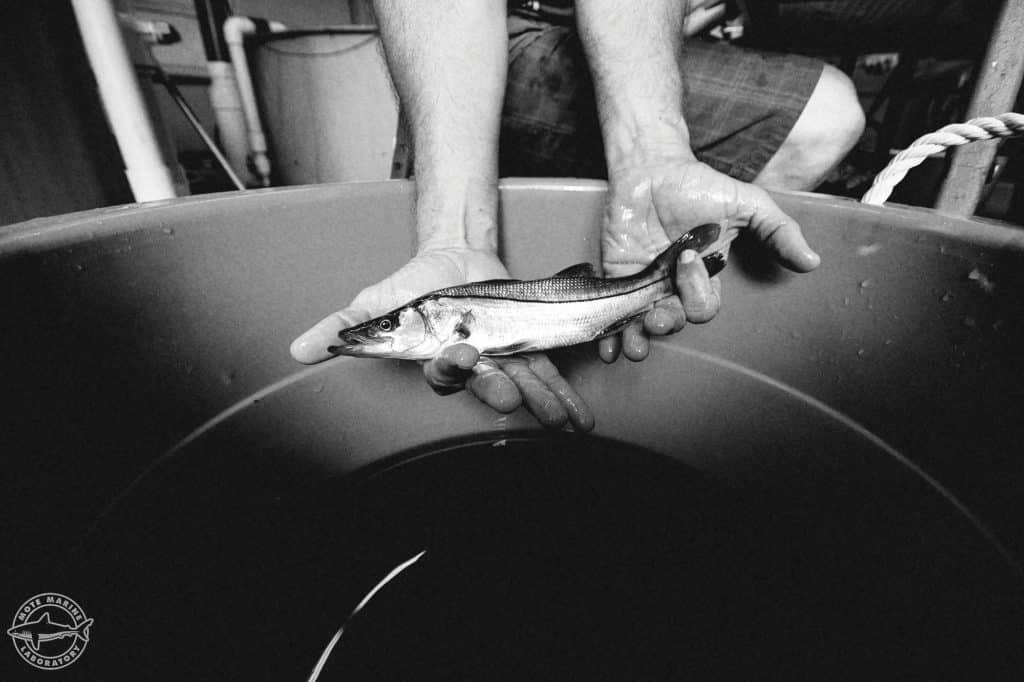
Phillipi Creek Snook Release
Species Specific
Fishery managers have successfully hatched and reared a wide range of fish species in captivity. Hatchery programs on the Texas Gulf Coast, which began 40 years ago, raise red drum, spotted seatrout and southern flounder.
In southwest Florida, Mote Marine Laboratory has perfected techniques for spawning, hatching and raising common snook. “It is one of the most difficult species to rear in captivity,” says Ken Leber, Mote’s associate VP of research. “In the past 20 years, we have released 66,000 juvenile snook into the wild.”
At the University of Miami Rosenstiel School of Marine and Atmospheric Science in Florida, you can find experimental hatchery-research programs focused on cobia, goggle-eyes (scads), hogfish, mahi, pompano, red snapper, tunas and groupers.
However, the school’s experimental hatchery efforts are devoted to aquaculture, not restocking. That said, the lessons learned at the school can help optimize practices at other hatcheries focused on fisheries enhancement.
Pelagic fish pose the greatest challenges, says Ron Hoenig, manager of the school’s experimental hatchery program. “Mahi, for example, are very active and grow quickly, and this becomes an issue as the fish — especially brood stock — grow,” he explains. “They reach 25 to 30 pounds in six to 14 months, and at that point, the tank is just too small for them. Tuna are even more difficult to manage as a hatchery fish.”
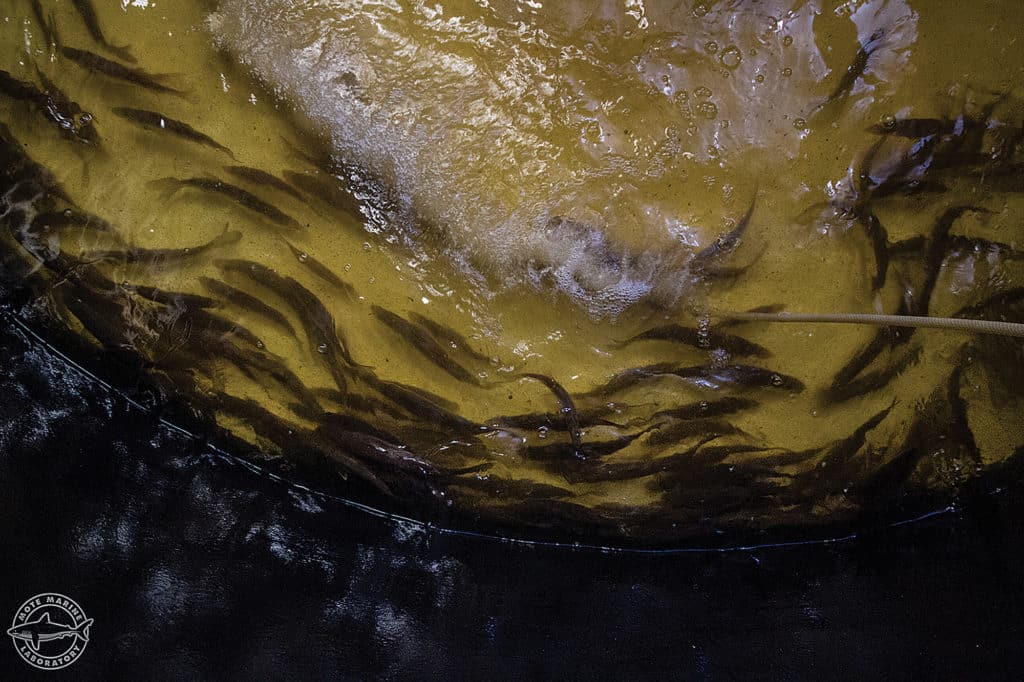
Phillipi Creek Snook Release
Viable Young
By staying on the cutting edge of science, hatchery managers learn more every day. “The more we learn about the life history and optimal conditions required for each fish species, the more successful we become,” Vega explains.
“There are a lot of variables between species,” says Leber, who has 33 years of marine-stock-enhancement experience. “Each species is different when it comes to the best size for release, the best season to release, the best location, and the magnitude of the release.” It can take years of research to figure out all of this, he has discovered.
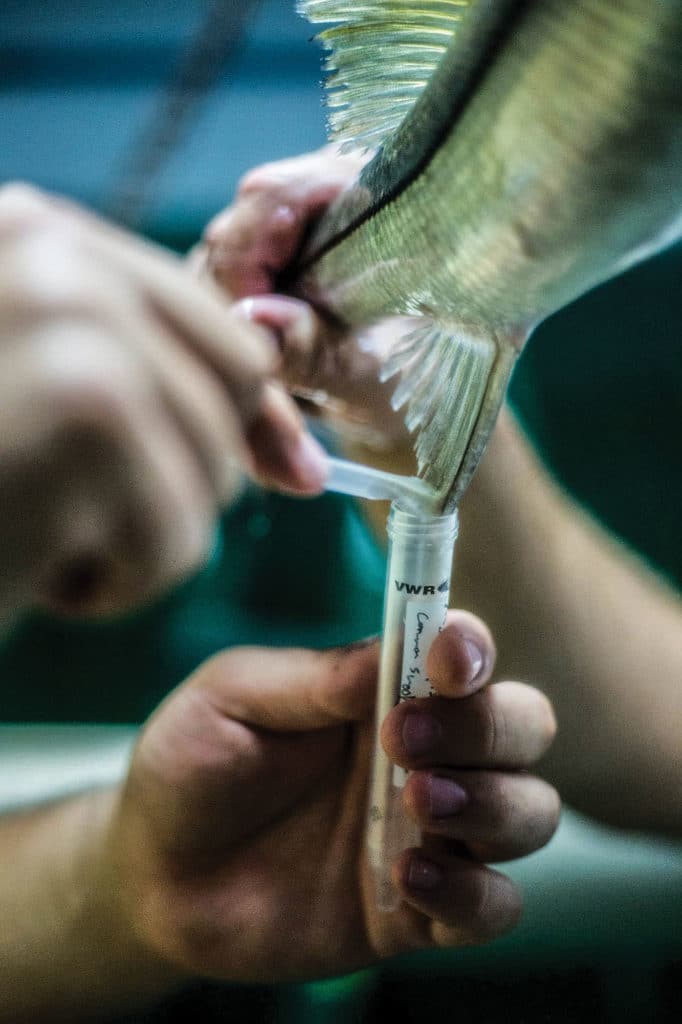
One constant, regardless of species, is the need to rear high-quality hatchery juveniles, Vega points out. “In the early days, hatcheries released fish when they were too small, but now we know that rearing species such as red drum to fingerling size or larger significantly increases survival rates.”
White seabass — a Pacific species of croaker that grows as large as 60 pounds or more — need to be reared to an even larger size, scientists believe. So, with the help of CCA California, a network of grow-out pens has been established in harbors and bays along the coast of Southern California. Fingerlings are transferred from the hatchery to the pens, where CCA volunteers feed and care for the fish until the white seabass reach about 9 inches, which is when they are released.
At Mote, snook are raised until they’re at least 10 months old before their release, so these fish are nearly a year old once introduced into the wild.
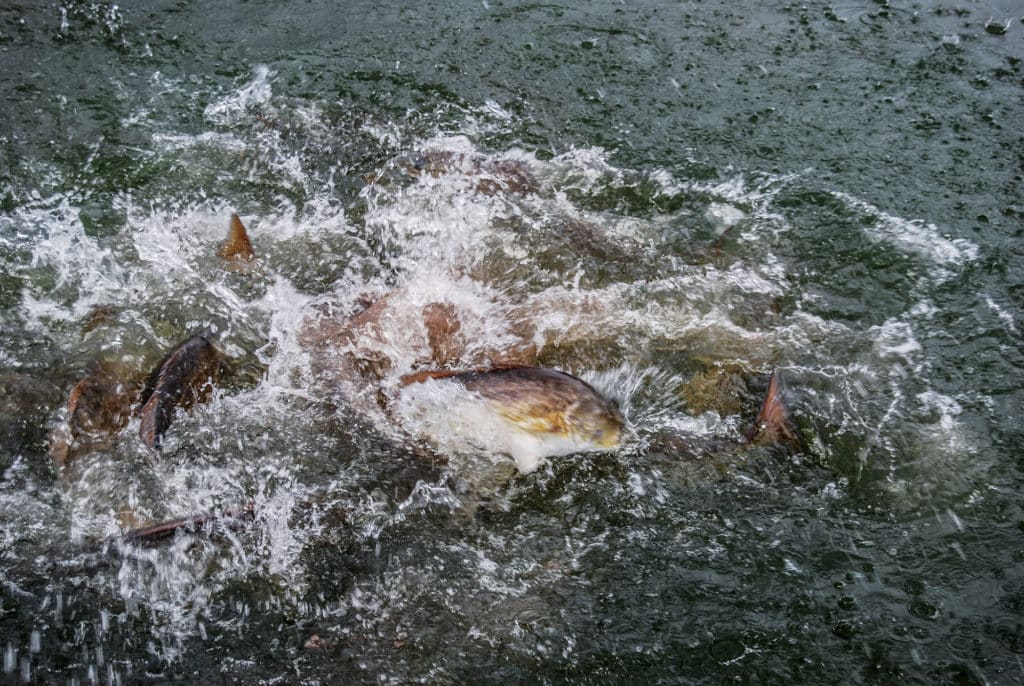
Measuring Success
Most people — anglers in particular — want to believe in the success of fishery-enhancement efforts. And in the case of anadromous species such as king salmon, success is fairly self-evident and easy to document. The fish return as adults from the ocean to essentially the same place where they were released as part of their life cycle. This facilitates scientific surveys of survival rates.
Yet most saltwater-hatchery fish prove far less cooperative. Juveniles scatter with the tides with no regard for county, state or international boundaries, and no inclination to return to the release site. That renders the task of measuring long-term success not only problematic, but also expensive.
Fishery managers have figured out ingenious methods to measure the success of their restocking efforts. In the bays of Texas, for example, researchers capture red drum with gill nets and bag seines all along the coast, and then submit samples of fin clippings from fish in a predesignated slot size for DNA testing.
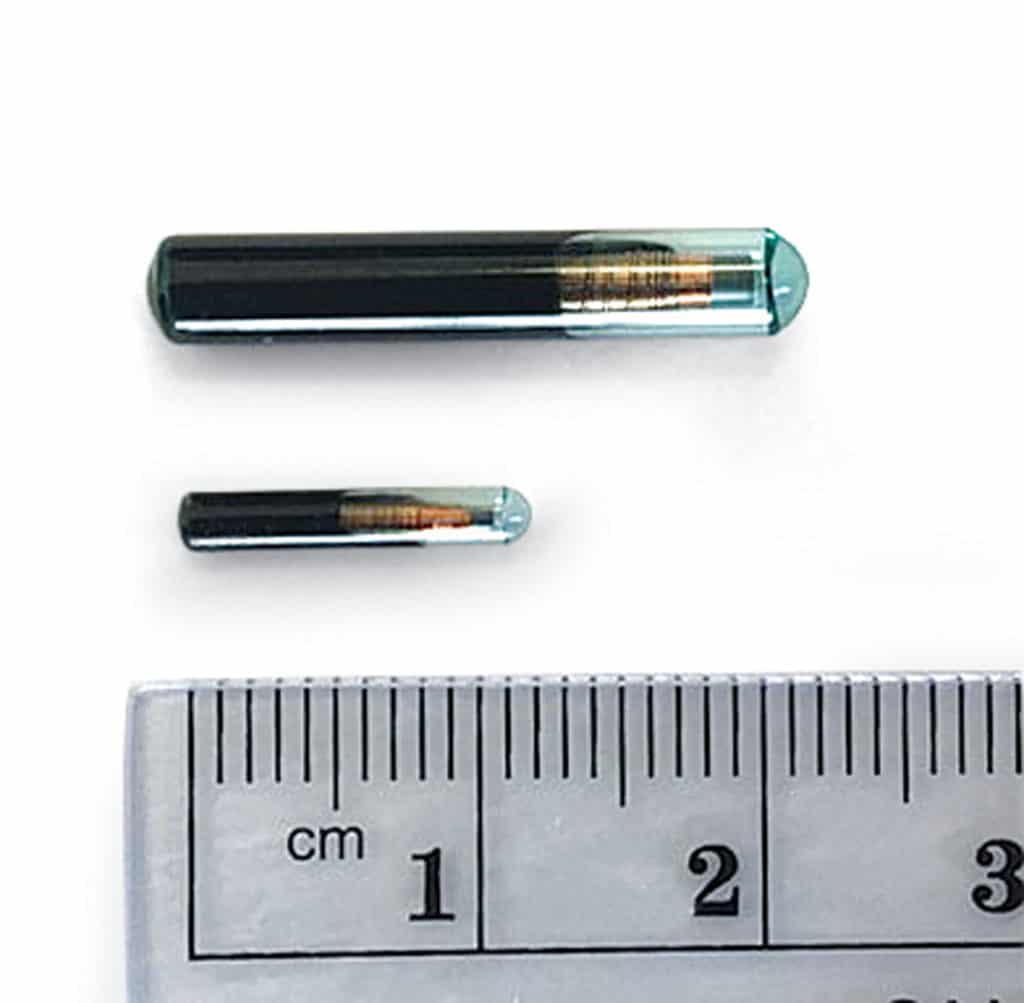
“Biologists have been doing genotyping to identify Texas hatchery red drum since the mid- to late 1990s,” says Shane Bonnot, executive director of CCA Texas. Back in a genetics laboratory, scientists look for a marker in the DNA sample that matches hatchery parents. Cost Analysis
Yet this methodology is not cheap. “To definitively measure success with DNA testing is pretty costly,” Bonnot explains. “To date, we have released 25 million red drum and seatrout, but the key to moving ahead is making sure everyone knows that it is working.”
The percentage of hatchery redfish in the Texas surveys has varied widely, says Bonnot. “There has also been some disagreement over limiting the sample fish to a certain slot size,” he admits. “This is primarily to cut costs.” Since the DNA testing is so expensive, limiting the number of samples helps keep down the budget.
“Returns have ranged from 1 to 17 percent from year to year,” Bonnot reveals, noting that the goal is 4 percent, which, on average, the program appears to be exceeding. “If 4 percent of the hatchery fish are surviving, the program is at break-even. That means it’s paying for itself in terms of the economic value of a red drum.”
Another benefit of DNA testing could be the ability to determine if hatchery fish are reproducing by looking for familial genetic markers, though no such study has yet taken place.
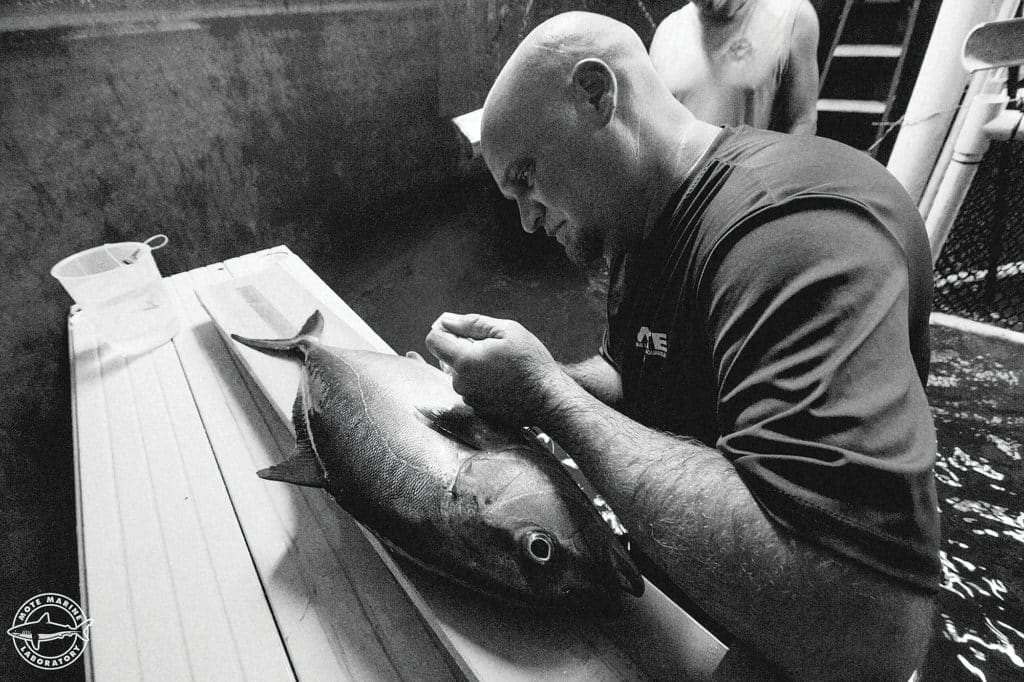
MAP Almaco Jack Tagging
Forms of Identity
Some fishery managers employ less-costly means of identifying hatchery fish. In California, for example, juvenile white seabass receive tiny coded wire tags at the hatchery. These are implanted into tissue in the fish’s forehead, and can be scanned with an electronic wand to identify the croaker as a hatchery fish.
Though some netting surveys have occurred, most of the fish scanned for tags are those captured by sport and commercial fishermen. The program relies on fishermen turning in heads of fish to collection stations for eventual scanning.
In Texas, the southern flounder restocking program, which began in 2006, has employed a special nontoxic but indelible dye on the tail to identify hatchery fish, Bonnot says.
Mote uses passive integrated transponder tags for hatchery snook, allowing scientists to more easily monitor and track fish. “The smallest tags are about 12 millimeters long and look like small pills,” says Ryan Schloesser, staff scientist for Mote’s Fisheries Ecology and Enhancement Program.
“The PIT tags are inserted inside the animal’s abdominal cavity, and these trigger a series of strategically placed sensors in the water when a fish swims by,” Schloesser explains. To date, 1,100 snook have been implanted with the tags, and Mote has documented more than 100,000 pings over a 12-month period.
“This survey technique has indicated survival rates of 10 to 20 percent during the juveniles’ first year in the wild, and in the marine-hatchery field, that’s pretty impressive,” Leber notes.
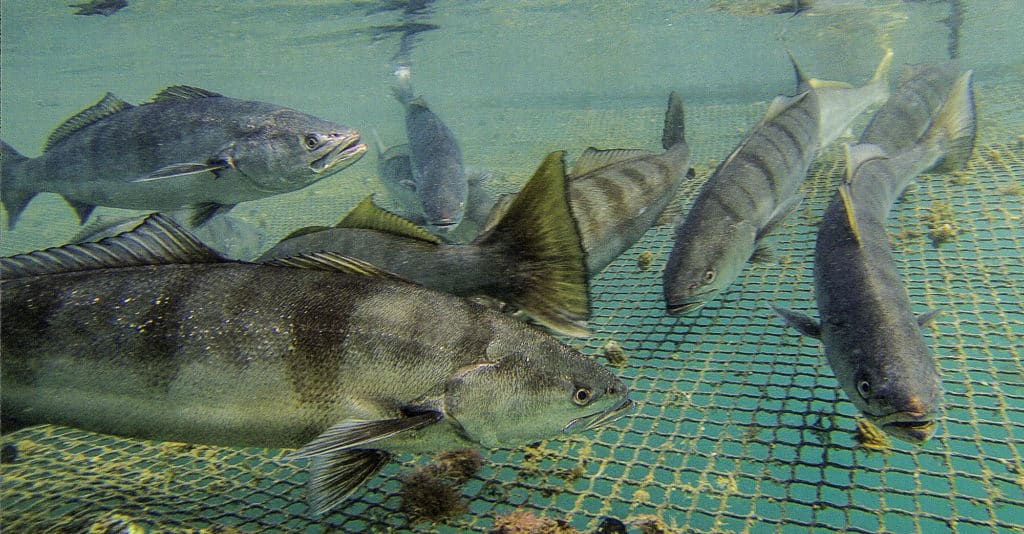
Under Scrutiny
Based on the emotional chord that fishery-enhancement efforts strike with the public, these programs almost always receive praise in the mainstream press and elsewhere. However, the Hubbs-SeaWorld Research Institute white seabass hatchery in Carlsbad, California, recently has come under criticism.
The Ocean Resources Enhancement and Hatchery Program was established with the goal of researching the feasibility of replenishing overfished stocks of the magnificent silvery croakers. Ongoing releases of hatchery white seabass has been taking place since 1986.
Read Next: Hubbs-Seaworld Receives Prestigious IGFA Award
Then in 1990, California voters passed Proposition 132, which banned the use in state waters of the commercial gill nets that had fairly decimated white seabass populations. Slowly, populations of white seabass rebounded, and many credit the hatchery program, as well as the gill-net ban. Capable of producing 350,000 juvenile white seabass annually, the hatchery has released well in excess of 2 million white seabass so far.
But an external evaluation of the program by a committee of scientists that began about five years ago indicates that less than 1 percent of the white seabass caught off Southern California emanate from the Carlsbad hatchery.
Differing Explanations
One scientist with the California Department of Fish and Wildlife, Mark Okihiro, has been particularly vocal in his criticism of the program. “The total number of adult hatchery fish (28 inches or more in length) caught by fishermen for the entire life of the OREHP release program (1986-2013) is only 180,” Okihiro wrote in May 2014. He blames poor survival rates on the prevalence of deformities due to less-than-stringent hatchery practices.
Mark Drawbridge, senior research scientist and head of the sustainable fisheries program for HSWRI, acknowledges the low return rate but points to another explanation: “Fish surveys from Santa Catalina Island (one of the best fishing areas for white seabass in SoCal) were excluded from the evaluation.”
The report contains a long-winded discussion about the reasons behind this geographic exclusion, but also acknowledges that “a higher proportion of fish was recaptured at Catalina compared [with] releases along the continental coast.” This lends credence to Drawbridge’s explanation, and for many, calls into question the validity of the evaluation.
That said, Drawbridge emphasizes that this is a research program and that HSWRI is open to changes. “We could continue to focus on white seabass or shift to another species,” he says. “Or we could discontinue the program altogether.” Those decisions eventually will be made by the California Fish and Game Commission, which controls funding for the program.
In the meantime, OREHP staff and volunteers from CCA California have already been out collecting California halibut to serve as brood stock in case the HSWRI needs to switch to a species that lends itself better to hatchery and restocking efforts.

